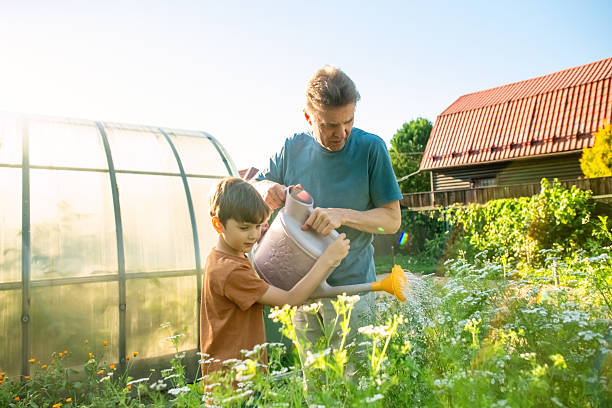Having a garden is a joy. But let’s be honest. A messy garden can be stressful. You may trip over tools, lose your gloves, or forget where you planted something. Organizing your garden makes it easier to enjoy. It also saves time and keeps things safe.
Let’s go step by step.
- Start with a Clean-Up
Before you organize, you need to tidy up.
- Pick up all the tools and place them in one spot.
- Remove weeds and dead plants.
- Sweep or rake paths so you can move around easily.
This step helps you see what you have and what you need.
- Make a Simple Plan
Don’t start moving things without a plan. Take a few minutes to think.
- Where do you spend the most time in the garden?
- Which areas are messy?
- Which tools do you use most often?
Draw a quick map on paper. Mark where you want each thing to go. It doesn’t have to be perfect. The plan is just to guide you.
- Create Zones
Organizing is easier if you divide your garden into zones.
Here are some examples:
- Tool Zone – For spades, rakes, and gloves.
- Planting Zone – For pots, seeds, and soil.
- Relaxing Zone – For chairs, tables, and maybe a small coffee spot.
- Compost Zone – For garden waste.
When things have their own place, you spend less time searching.
- Use Smart Storage
Good storage keeps things tidy and easy to reach. You don’t need to spend a lot. You can even reuse things you already have.
- Old buckets can hold small tools.
- Hooks on a wall can hold rakes or hoses.
- Shelves can hold pots and bottles.
If you want something useful and stylish, a garden storage bench is a great choice. You can sit on it and store tools inside. It saves space and looks nice too.
- Keep Tools Close to Where You Use Them
If you always plant flowers in one corner, keep your trowel and watering can nearby. Walking back and forth wastes time and energy. Small tool boxes or buckets are perfect for moving items easily.
- Label Everything
Labels help you remember what’s where.
- Label storage boxes.
- Label pots with plant names.
- Use waterproof pens so the writing lasts.
This is extra helpful if you have many similar-looking plants or seeds.
- Think Vertical
If your garden is small, go up instead of out.
- Use wall-mounted shelves.
- Hang baskets or planters.
- Fix hooks to fences for tools.
Vertical storage frees up ground space for plants and walking.
- Keep Paths Clear
Clear paths make your garden look bigger and safer. Don’t leave pots or tools in the way. If you have narrow paths, keep storage to the side so you can move around without bumping into things.
- Use Containers for Small Items
Small items like seeds, gloves, or plant markers get lost easily. Use jars, tins, or small plastic boxes. Keep them in one place so you always know where to find them.
- Regularly Declutter
A garden is like a house. If you don’t clear it often, it will get messy again. Every month, spend 15–20 minutes checking:
- Do you have tools you don’t use?
- Are there broken pots?
- Is there waste that needs composting?
Throw away or give away things you don’t need.
- Make It Easy to Maintain
Don’t make organizing complicated. Keep your storage close to where you work. Keep your most-used tools in the easiest place to reach. If it’s too much work to put things back, you won’t do it.
- Add a Personal Touch
Your garden is your space. Organizing it doesn’t mean it has to look boring.
- Paint your storage boxes in bright colours.
- Add cushions to your bench.
- Put up small signs or decorations.
When your garden looks nice, you’ll want to keep it tidy.
- Have a Routine
Spend a few minutes at the end of each gardening day to put things back. Wipe tools if they are muddy. Roll up hoses so they don’t tangle. Small habits make a big difference.
Quick Summary Tips
- Clean before you organize.
- Plan where things should go.
- Make zones for tools, plants, and relaxing.
- Use smart storage and think vertical.
- Keep paths clear and label everything.
- Declutter often and keep things easy to reach.
Final Thoughts
A well-organized garden is more enjoyable. You’ll save time, protect your tools, and have more space for plants. Start small and make changes bit by bit. Soon, your garden will not only look tidy but will also be easier to use every day.
